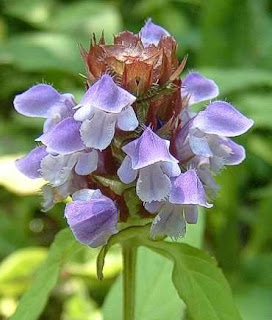
A cactus (plural: cacti, the word derives from Greek, thus the Latin plural "cacti" is etymologically inappropriate, though it is frequently used nonetheless as is otherwise singular "cactus") is any member of the succulent plant family Cactaceae, native to the Americas. They are often used as ornamental plants, but some are also crop plants.
Cacti are distinctive and unusual plants, which are adapted to extremely arid and hot environments, showing a wide range of anatomical and physiological features which conserve water. Their stems have expanded into green succulent structures containing the chlorophyll necessary for life and growth, while the leaves have become the spines for which cacti are so well known.
Cacti come in a wide range of shapes and sizes. The tallest is Pachycereus pringlei, with a maximum recorded height of 19.2 m,[1] and the smallest is Blossfeldia liliputiana, only about 1 cm diameter at maturity.[2] Cactus flowers are large, and like the spines and branches arise from areoles. Many cactus species are night blooming, as they are pollinated by nocturnal insects or small animals, principally moths and bats. Cactuses' sizes range from small and round to pole-like and tall.
The cacti are succulent plants that grow either as trees, shrubs or in the form of ground cover. Most species grow on the ground, but there is also a whole range of epiphytic species. In most species, except for the sub-family of the Pereskioideae (see image), the leaves are greatly or entirely reduced. The flowers, mostly radially symmetrical and hermaphrodite, bloom either by day or by night, depending on species. Their shape varies from tube-like through bell-like to wheel-shaped, and their size from 0.2 to 15-30 centimeters. Most of them have numerous sepals (from 5 to 50 or more), and change form from outside to inside, from bracts to petals. They have stamens in great numbers (from 50 to 1,500, rarely fewer). Nearly all species of cacti have a bitter sometimes milky sap contained within them. The berry-like fruits may contain few, but mostly many (3,000), seeds, which can be between 0.4 and 12 mm long.[3]
The life of a cactus is seldom longer than 300 years, and there are cacti which live only 25 years (although these flower as early as their second year). The Saguaro cactus (Carnegiea gigantea) grows to a height of up to 15 meters (the record is 17 meters 67cm), but in its first ten years it grows only 10 centimeters. The "mother-in-law's cushion" (Echinocactus grusonii) reaches a height of 2.5 meters and a diameter of 1 meter and - at least on the Canaries - is already capable of flowering after 6 years. The diameter of cactus flowers ranges from 5 to 30 cm; the colors are often conspicuous and spectacular.
Cacti are distinctive and unusual plants, which are adapted to extremely arid and hot environments, showing a wide range of anatomical and physiological features which conserve water. Their stems have expanded into green succulent structures containing the chlorophyll necessary for life and growth, while the leaves have become the spines for which cacti are so well known.
Cacti come in a wide range of shapes and sizes. The tallest is Pachycereus pringlei, with a maximum recorded height of 19.2 m,[1] and the smallest is Blossfeldia liliputiana, only about 1 cm diameter at maturity.[2] Cactus flowers are large, and like the spines and branches arise from areoles. Many cactus species are night blooming, as they are pollinated by nocturnal insects or small animals, principally moths and bats. Cactuses' sizes range from small and round to pole-like and tall.
The cacti are succulent plants that grow either as trees, shrubs or in the form of ground cover. Most species grow on the ground, but there is also a whole range of epiphytic species. In most species, except for the sub-family of the Pereskioideae (see image), the leaves are greatly or entirely reduced. The flowers, mostly radially symmetrical and hermaphrodite, bloom either by day or by night, depending on species. Their shape varies from tube-like through bell-like to wheel-shaped, and their size from 0.2 to 15-30 centimeters. Most of them have numerous sepals (from 5 to 50 or more), and change form from outside to inside, from bracts to petals. They have stamens in great numbers (from 50 to 1,500, rarely fewer). Nearly all species of cacti have a bitter sometimes milky sap contained within them. The berry-like fruits may contain few, but mostly many (3,000), seeds, which can be between 0.4 and 12 mm long.[3]
The life of a cactus is seldom longer than 300 years, and there are cacti which live only 25 years (although these flower as early as their second year). The Saguaro cactus (Carnegiea gigantea) grows to a height of up to 15 meters (the record is 17 meters 67cm), but in its first ten years it grows only 10 centimeters. The "mother-in-law's cushion" (Echinocactus grusonii) reaches a height of 2.5 meters and a diameter of 1 meter and - at least on the Canaries - is already capable of flowering after 6 years. The diameter of cactus flowers ranges from 5 to 30 cm; the colors are often conspicuous and spectacular.










